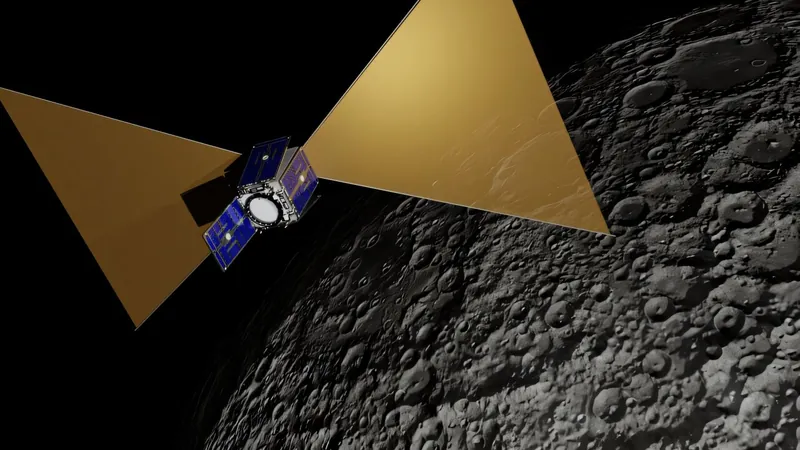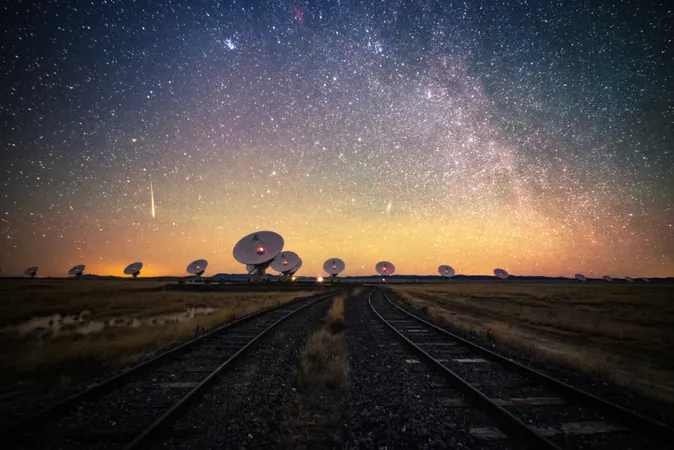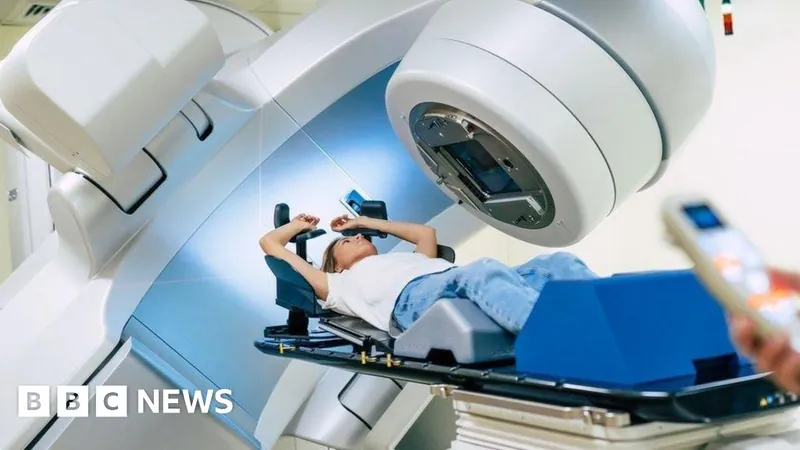
Unlocking the Secrets of the Universe: A Bold Lunar Mission to the Cosmic Dawn
2025-07-08
Author: Rajesh
Astronomers Turn to the Moon to Unravel Cosmic Mysteries
In an audacious bid to uncover the mysteries of the universe, astronomers are planning to deploy a miniature spacecraft to the moon’s far side, aiming to capture an elusive 'ancient whisper' from the depths of the Cosmic Dawn.
Exploring the 'Dark Ages' of the Universe
This groundbreaking mission strives to investigate a time shortly after the Big Bang, known as the "Dark Ages," when the cosmos was a dark and empty expanse, void of stars and galaxies.
However, to successfully probe this cosmic era, it’s crucial to minimize interference. Earth, with its bustling electronic signals and atmospheric noise, stands as a formidable obstacle. Dr. Eloy de Lera Acedo, leading the charge on this proposal, likens the challenge to trying to hear a whisper amid the chaos of a loud concert.
Songs of Hydrogen: The Key to Understanding Our Origins
The mission seeks to detect faint radio signals emanating from hydrogen, the universe’s most fundamental and abundant element during its infancy. Dr. de Lera Acedo explains, "To capture this signal, we need a quiet environment, and that's what the far side of the moon offers."
CosmoCube: A Revolutionary Spacecraft for a New Era of Discovery
Led by a U.K. team, the CosmoCube mission aims to leverage the moon’s far side as a pristine observational platform, shielded from Earth's radio noise. This unique positioning allows the spacecraft to 'listen' for signals that could provide profound insights into the Cosmic Dawn and the formation of galaxies.
De Lera Acedo emphasizes that this mission will not only shed light on how the universe evolved from a simplistic void to the vibrant cosmos we observe today but will also delve into the enigmatic realm of dark matter and its integral role in cosmic structure formation.
Hi-Tech Innovations Fueling the Mission
CosmoCube will utilize a low-power, precision-calibrated radio radiometer on a cost-effective satellite orbiting the moon. Operating within a low frequency range of 10-100 MHz, it’s designed to capture faint cosmic signals amid looming noise.
Addressing the Hubble Tension and Dark Matter Mysteries
This mission holds the promise of resolving the Hubble tension, the ongoing debate surrounding discrepancies in the universe’s measured expansion rate. Moreover, it aims to uncover potential interactions between dark matter particles and ordinary matter, tapping into the physics that govern the early universe.
A Journey into the Unknown: Observational Cosmology's Final Frontier
The 'Dark Ages' represent one of the last unexplored territories in observational cosmology, offering unique insights into the fundamental processes of cosmic evolution. According to Professor David Bacon, a fellow researcher on the CosmoCube team, "The journey of these radio waves spans billions of years, carrying the stories of the universe's history. Our next challenge? To head to the quieter realm of the moon and listen to those tales."
Collaborative Efforts Propel the Mission Forward
Supported by the U.K. Space Agency’s Science Bilateral Program, CosmoCube is the product of an international consortium featuring experts from the University of Cambridge, University of Portsmouth, and STFC RAL Space. With successful lab prototypes already in development and partnerships with industry leaders like SSTL Ltd, the mission is poised to launch a new frontier in our understanding of the universe.





 Brasil (PT)
Brasil (PT)
 Canada (EN)
Canada (EN)
 Chile (ES)
Chile (ES)
 Česko (CS)
Česko (CS)
 대한민국 (KO)
대한민국 (KO)
 España (ES)
España (ES)
 France (FR)
France (FR)
 Hong Kong (EN)
Hong Kong (EN)
 Italia (IT)
Italia (IT)
 日本 (JA)
日本 (JA)
 Magyarország (HU)
Magyarország (HU)
 Norge (NO)
Norge (NO)
 Polska (PL)
Polska (PL)
 Schweiz (DE)
Schweiz (DE)
 Singapore (EN)
Singapore (EN)
 Sverige (SV)
Sverige (SV)
 Suomi (FI)
Suomi (FI)
 Türkiye (TR)
Türkiye (TR)
 الإمارات العربية المتحدة (AR)
الإمارات العربية المتحدة (AR)